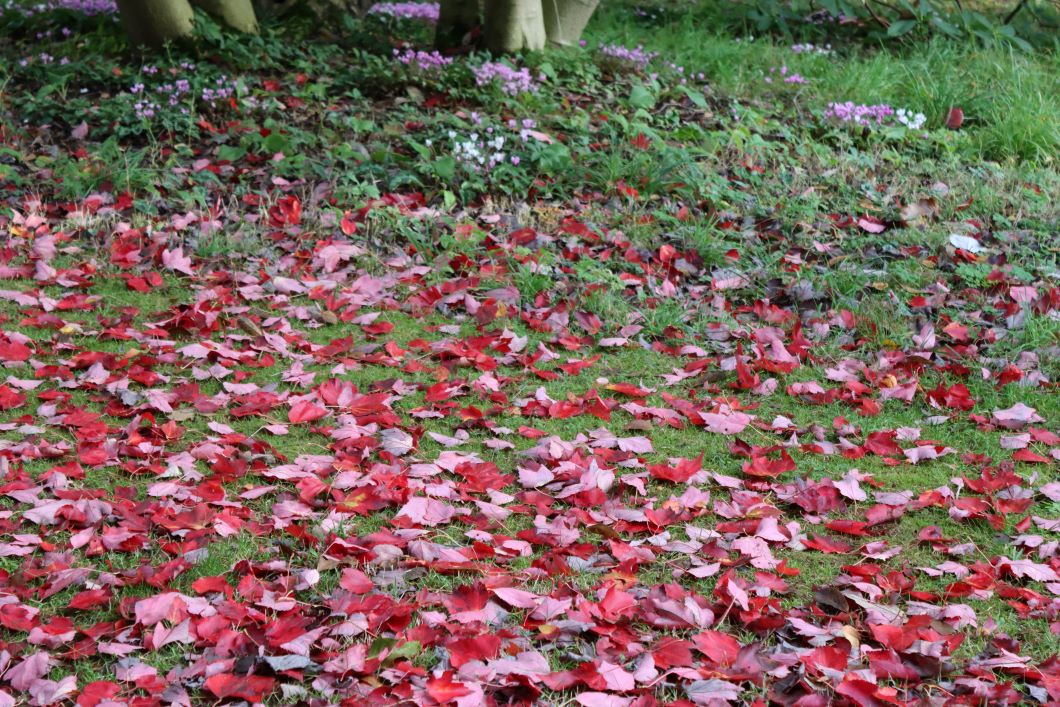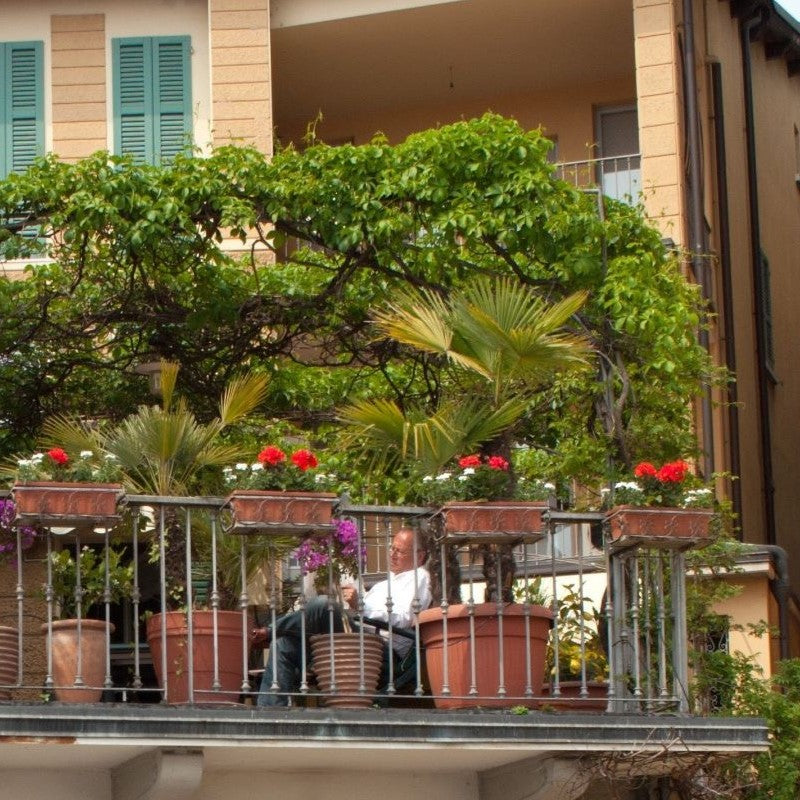Advice & Inspiration
East Bergholt Place Gardens - November Garden of the Month

Created by generations of autumn aficionados
Looking for planting inspiration to make your garden shine all year round? Every month we visit a garden which we think has nailed the best trends of the season, then report back with tips on which plants to use and how to recreate the look.
This month, we’re in Suffolk, exploring the picture perfect village of East Bergholt. You could be forgiven for thinking you’d stepped into a Constable painting as you take in the bucolic countryside here and there’s a reason for that - the artist was born here and painted over a hundred and eighty of the local sights, including Willy Lott’s house and Flatford Mill.
Just down the road, arboriculturalist Rupert Eley has been gardening at his family’s home of East Bergholt Place for twenty years. “The garden was laid out originally by my great grandfather,” he explains, “but the bit we're looking at now is all planted in the last twenty years.”
The beautifully kept gardens are home to a myriad of magnolias, rhododendrons, camellias and spring bulbs and East Bergholt Place also boasts the national collection of deciduous euonymus, with a hundred varieties to be admired.
But Rupert’s favourite season is autumn and it’s not hard to see why, as his garden is home to some of the most spectacular autumn tree colour we’ve ever seen.
“It’s a very special time of year,” he says, “we've been planting autumn colour for many years, and I always think that by doing that, you can enjoy your garden right up to the end of November. By the time the autumn colour finishes, we're only a month away from the shortest day so it just makes the winter that much shorter.”
As we crunched through the leaves, we asked Rupert to talk us through some of his favourites and explain what makes these autumn trees so special. We even picked up a few tips for successfully growing them, too…
Rupert’s top autumn trees
Crabapple
“It's very easy to think that when one's talking about autumn colour,” says Rupert, “one is solely talking about leaf colour, but in the case of crabapples, they also have wonderful fruit.”
Crabapples are naturally small native trees that have huge benefits for garden wildlife, including the fruit, which stays on the branches right through winter to provide a vital food source for birds.
“They also have wonderful autumn colouring,” Rupert adds, “and what’s lovely about them in the spring is that they’re a mass of flowers so you get a wow in the spring and then a really good wow in the autumn as well.”
Crabapples vary in size and colour, with the smaller ones appealing more to birds and the larger ones being suitable for cooking jellies and jams.
Japanese maple (acer)
Rupert stops in front of a huge, red-leaved Japanese maple tree. “Autumn wouldn’t be the same without the contribution from them,” he says, “this is an old tree and shows you what they can become with age.”
Acers are one of the most loved of garden trees, largely due to their vivid red or purple colour, but also because they’re naturally slow growing and can be kept to a small size, with many of them being suitable for container growing.
“They’re lovely light, airy trees,” Rupert continues, “and you don’t have to let them get as large as this. With pruning, they’ll be quite happy in a pot.”
Find your perfect acer tree with our simplified guide.
Sorbus (rowan)
Is there anything not to love about rowan trees? They look delightful all year round and provide food and shelter to an astonishing number of British wildlife species. Not to mention they pretty much look after themselves after the first year or so after planting.
“I don’t know how one can really walk past a tree like that,” says Rupert, “it is just so lovely in fruit. They’re very good autumnal trees, with masses of fruit, then you’ve got these very fine, ferny leaves that then go red as well. Just a cracking plant for this time of year.”
Nine out of ten birds agree, with their numbers increasing at this time of year as other food sources become scarce. Rowan berries are a particular favourite with blackbirds, mistle thrushes, redstarts, redwings, song thrushes, fieldfares and waxwings, and the fruit will last all winter (or until the birds strip it bare).
There are so many varieties of rowan tree in different sizes and with red, orange, yellow or pink berries, that finding the perfect sorbus for your garden is a breeze.
Euonymus
East Bergholt Place holds the national collection of deciduous euonymus, and today we’re looking closely at two different types.
“Euonymus alatus is a very, very reliable autumn colouring shrub,” says Rupert. He’s not kidding, the crimson red colour on this is jaw dropping.
“It’s not too big, nice and open,” he goes on, “and you also get fruits on it, with little orange seeds.
In contrast, Euonymus europeus (spindle) still has green leaves, and it’s the fruit that makes it look so vibrant.
“It’s absolutely lovely,” says Rupert, “with these super pink fruits which then burst open to reveal the orange seeds inside. A very good shrub and not troublesome.”
How to get the best from your autumn trees
So how do they get such fantastic colour from the autumn trees at East Bergholt? Rupert explains that it’s partly thanks to the growing conditions.
“In terms of the colouring plants, just in the East of England where we are, we do get some very good autumn colour,” he tells us, “because we get sunnier days and colder nights - all the things that one needs to bring it on. And the soil here is acidic, which is helpful!”
Rupert also gave us these helpful tips that work wherever you are:
- “To keep acer trees small, you can formative prune them by trimming the tips when the growth is young. Then you can shape them as you want to.” Find out more in our acer pruning guide.
- “Rowan trees don't always want to be out in full sun if we have a late summer like last year. I think having a cool root run and a little bit of shade helps them do particularly well.” The ideal spot for a rowan tree would be a position with sun in the morning and a bit more shade in the afternoon.
- Euonymus alatus needs to be in full sun to develop the best autumn colour. “Interestingly underneath where it’s not getting the sun so much,” says Rupert, “you’re not really seeing the reds, so it just goes to show the difference a little bit of shade can make to a plant’s autumn colour.”

Feeling inspired?
“No doubt about it, autumn colour does make the winter considerably shorter and it's a very special time of year,” says Rupert.
If you’ve been inspired to grow your own autumn trees, take a look at The Place For Plants’ Instagram, then explore this collection of our growers’ best autumn plants and trees.






















